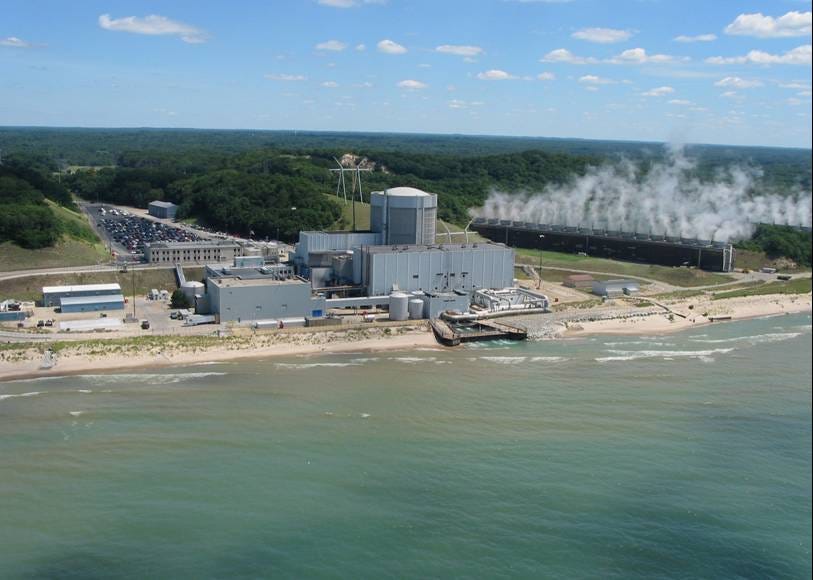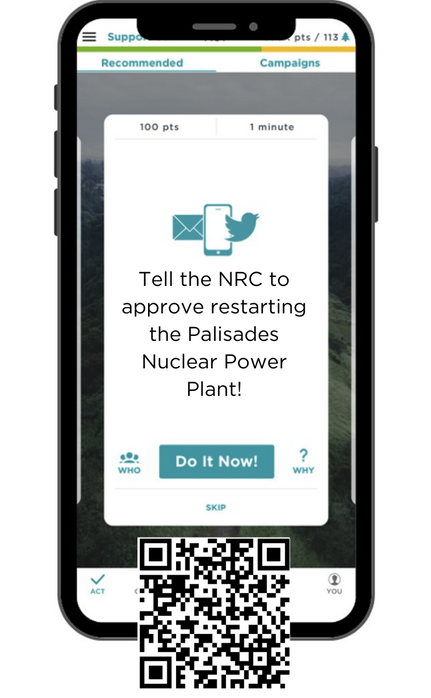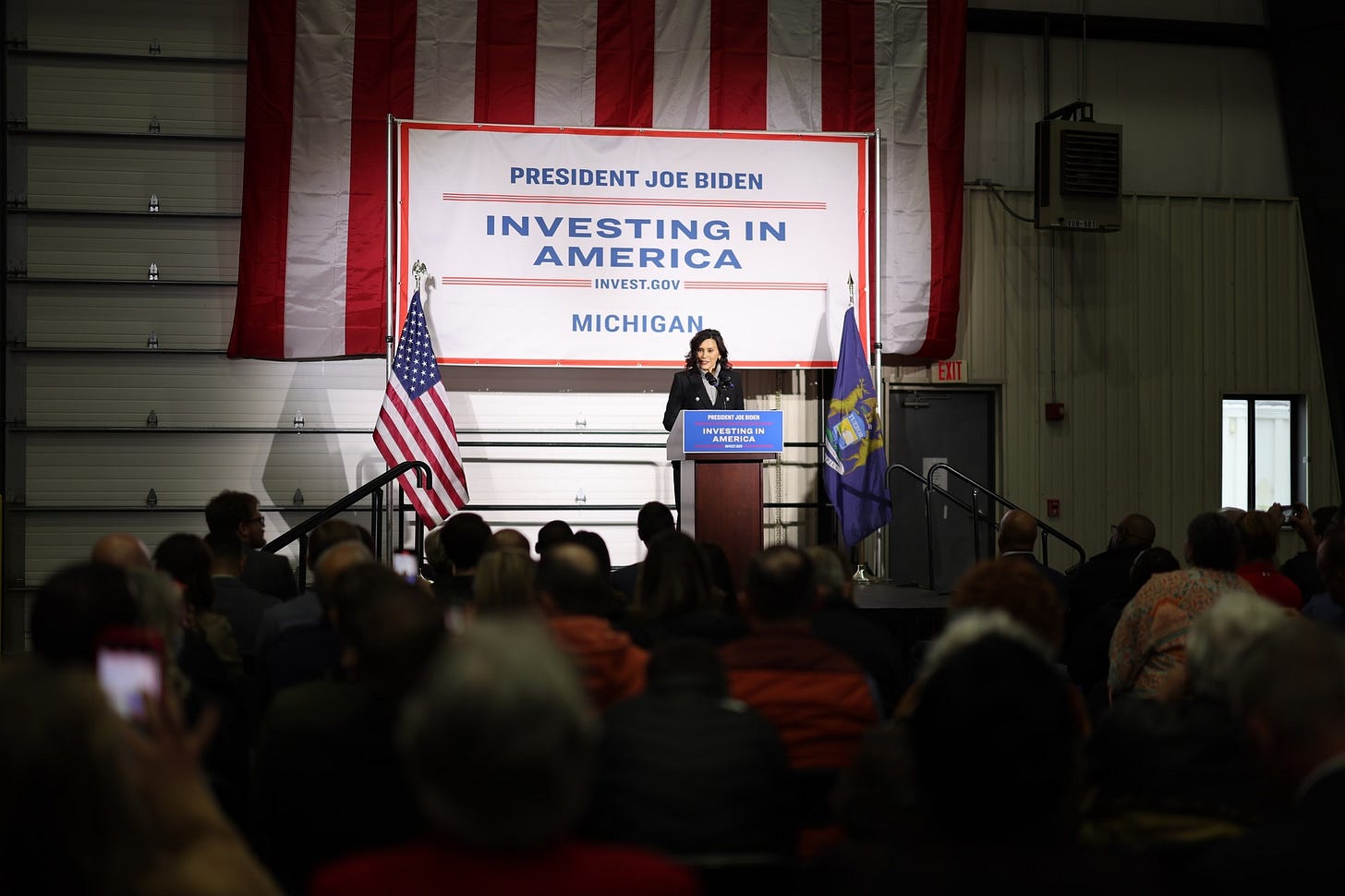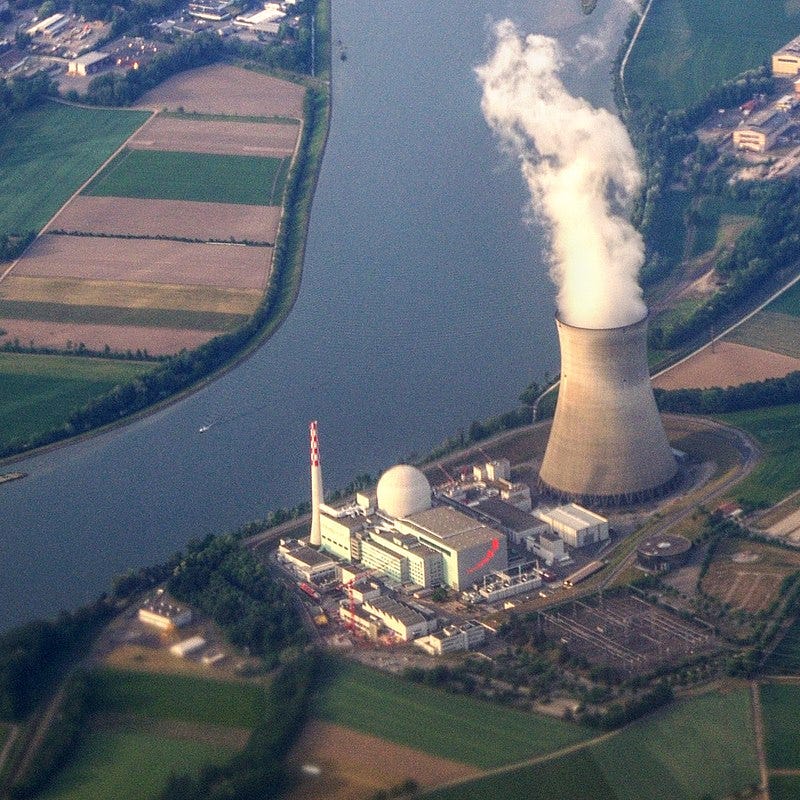Until July 29, the U.S. Nuclear Regulatory Commission is accepting comments on a plan to reopen the Palisades Nuclear Power Plant in Michigan, supported by the Biden Administration and Governor Whitmer.
Nuclear power is much cleaner and safer than fossil fuels, and we need all the clean electrons we can get right now - let’s tell them to make this happen!
Touch or scan the QR code below to take today’s action in the app:
You earn trees and points when you take action in the CAN app!
Or take action on the Internet:
Reasons For Hope

The Palisades Nuclear Power Plant was closed for financial reasons in 2022, but a new owner is working to make it the first restarted nuclear power plant in American history, bringing more clean electrons on the grid right when we need them. The Biden Administration and the State of Michigan have worked together closely to make this project possible, with the Department of Energy providing a conditional commitment for a loan of up to $1.52 billion to restart the Palisades plant.
“Thanks to an effective collaboration between the Biden-Harris Administration, the State of Michigan, the Michigan Legislature, and Holtec, work will begin shortly to restart operations at Palisades. Once complete, Palisades will become the first successfully restarted nuclear power plant in American history, protecting 600 union jobs at the plant, 1,100 in the community, and access to clean, reliable power for 800,000 homes.”
-Governor Gretchen Whitmer, D-Michigan
Climate activists should support the plan to reopen the Palisades nuclear power plant. Here’s why.
Reopening Palisades would be a good thing for climate action, as nuclear power is much cleaner and safer than fossil fuels (even though it’s not quite as good as renewable energy, which is equally clean and safe but much faster and cheaper to build).

Nuclear, wind, and solar (and almost certainly geothermal too, although when this chart was made it was rare enough it hadn’t been formally evaluated) are the only major energy sources with less than 10 tonnes of greenhouse gas emissions per gigawatt-hour and less than 0.1 human death per terawatt-hour of electricity production.
Worst-Case Scenario Nuclear Accidents Kill Fewer People Than Fossil Fuel Plants Working Normally
Nuclear power is immensely safer than fossil fuels, but to most people it doesn’t seem that way. Why is that? Nuclear accidents are rare, big, and dramatic: they cause mass evacuations, make international news for months, and inspire documentaries for years to come. There have really been only two serious nuclear power accidents (Chernobyl and Fukushima, the only two Category 7 events on the International Nuclear Event Scale), but it was enough to brand nuclear power as “very dangerous” in the eyes of the global public. However, fossil fuel plants functioning normally produce lots of air pollution every day, causing a constant toll of deaths from asthma, COPD, lung cancer, and a wide range of other ailments (see the chart above from the European Environment Agency). This isn’t nearly as cinematic or headline-grabbing, but is killing hundreds of times more people.
A 2021 study from Harvard calculated that fossil fuel-caused air pollution killed over 8 million people in 2018, making fossil fuels responsible for one-fifth of all human deaths worldwide. And that’s just direct fossil fuel deaths, from soot and particulate matter in the air getting in people’s lungs. Indirect fossil fuel deaths, from the wildfires, storms, heatwaves droughts, floods, and famines exacerbated by climate change, are harder to calculate but are also considerable. (For more, check out this amazing map from CarbonBrief of how exactly climate change has influenced specific major weather events in recent years).
By comparison, the nuclear power safety stats in the Our World in Data chart at the top of this article include all deaths from the Chernobyl and Fukushima disasters, which top out in the hundreds to low thousands depending on how you calculate increased cancer risk. (The Three Mile Island meltdown, probably the third most famous nuclear power plant disaster, didn’t even have any directly associated deaths, it was just scary).
Shutting down nuclear power seems safer, but often ends up killing people. A 2020 study found that Germany’s phase-out of nuclear power after the 2011 Fukushima disaster directly caused over 1,100 additional deaths from air pollution each year!
“The [German nuclear] phase-out resulted in more than 1,100 additional deaths per year from increased concentrations of SO2, NOx, and PM (particulate matter). The increase in production from hard coal plants is the key driver here, making up roughly 80% of the increase in mortality impacts.”
-Jarvis, Deschenes, and Jha, 2019.
Nuclear Power is a Zero-Carbon Emissions Energy Source
It’s fairly common knowledge, but it’s worth clarifying as well that nuclear power is also a clean energy source from a climate perspective, as it doesn’t emit major climate change-causing greenhouse gases like carbon dioxide or methane. See the picture above, of Leibstadt Nuclear Power Plant in Switzerland? That white stuff coming out of the cooling tower is water vapor, and does not contain carbon dioxide. The water vapor is there because like fossil fuels, nuclear power normally generates energy by creating heat that turns water into steam that turns a turbine. Water vapor is technically a greenhouse gas as well, but we don’t worry about it much because it falls out of the atmosphere as precipitation in a matter of days or so1 (instead of lingering for decades, like methane, or centuries, like carbon dioxide) so we don’t get a big climate change-causing backlog.
Shutting down nuclear power generally means making climate change worse. Germany’s unnecessary closing of its last nuclear power plants in 2023 has been widely criticized for causing a short-term increase in coal burning. This has slowed decarbonization, with a “treadmill” effect where the new wind and solar power coming online is replacing nuclear power going offline, swapping one clean energy source for another without decreasing the use of fossil fuels. To be fair, Germany has also committed to ending coal burning by 2030 and replacing it with even more renewables, so this isn’t a permanent issue-but it’s already caused years of unnecessarily high emissions during a climate crisis! Not okay!
“On April 16, the day after the final nuclear plants shut down in Germany, the country recorded a carbon intensity of 476 grams of CO2 equivalent for every kilowatt-hour of electricity produced. About half the nation’s electricity came from renewable sources, but coal made up about 30% of the supply.
Meanwhile, in France, only 30% of electricity came from renewables. Add in nuclear, though, and low-carbon power sources made up 93% of the electricity supply. So France’s emissions for every unit of electricity were lower than Germany’s by a factor of nearly 10, at 51 grams CO2-eq/kWh, largely because of its heavy reliance on nuclear power.”
-MIT Technology Review
Nuclear Is Safe and Clean, But Not Cheap or Fast. Wind, Solar, and Batteries are Safe, Clean, Cheap, and Fast.
So why isn’t nuclear the main focus of the global fight against climate change? It’s been “overtaken,” so to speak, by equally clean and safe technologies that are also cheaper and faster to build (not to mention less controversial). Both solar and wind power got incredibly cheap, incredibly fast in the 2010s due to rapid advances in technology and a surge in investment: from 2020 onwards, solar has been the cheapest source of electricity in history. During this same period, nuclear power got more expensive2. Unsurprisingly, this has led to the building of lots more wind and solar and very little new nuclear - that’s why new solar and battery storage projects are set to account for over 80% of newly built U.S. grid capacity in 2024 while new nuclear will supply 2%.
By now, nuclear is essentially a sideshow compared to the amazing exponential advances of the renewables revolution, but it is still a clean, safe, and zero-carbon-emissions technology that we should support where feasible.
We shouldn’t shut working nuclear plants down, because they’re a reliable, safe source of low-carbon energy and it’s crazy to take that off the grid in the age of climate change. For example, when California’s legislature recently passed a five-year extension to prevent an early closure of Diablo Canyon Nuclear Power Plant, that was a good thing, and the pending federal 20-year license extension for Diablo Canyon should go forward as well. An S&P analysis found that keeping Diablo Canyon online avoids the need for new gas generation and likely lowers California’s emissions 10% by 2030.
This paradigm broadly holds for all of America’s other nuclear plants-it’s slow and costly to build new ones, but we should keep all the old ones as long as we can. Where we have shut down perfectly good nuclear power plants, as with the Palisades case in Michigan, we should reactivate them to help achieve cleaner air and lower emissions. Japan is doing this, and hopefully Germany and the USA will soon follow.
Help speed up the transition away from fossil fuels, the dirtiest energy source, and tell the NRC to support the reopening of the Palisades Nuclear Power Plant!
Stay up to date with all our climate actions by downloading the CAN App!
Fun fact: the average residence time of a water molecule in Earth’s atmosphere is nine days. For methane, it’s 12.4 years. For carbon dioxide, it can’t be summed up in one value that easily because some CO2 molecules are absorbed by the ocean very quickly while some stay in the atmosphere for thousands of years, but it averages out, broadly speaking, into impacts lasting for hundreds of years.
There are many reasons why this is the case. In large part, it’s due to solar and wind having a higher “learning rate”: companies can build lots and lots of little solar panels and wind turbines and learn how to make them better with each new generation, but can generally only build one or two new nuclear power plants per decade, so it takes a long time to learn from previous mistakes and make technological improvements. Renewables are also just inherently a cheaper technology in some ways: for example, they don’t need expensive uranium as a fuel input, or water as a coolant. You can build them turbine-by-turbine or panel-by-panel as funds become available, instead of sinking a huge amount of capital into building a nuclear power plant that only generates energy once it’s fully complete. (Also, nuclear power plants are generally extremely heavily regulated, which some have argued is disproportionate and stems from public fear rather than realistic cost/benefit analyses, but is still an on-the-ground reality slowing nuclear power construction that the global energy market has to deal with). As seen in this chart, all this has made wind and solar substantially cheaper to build overall than nuclear, as well as most other sources of energy, and solar and batteries are set to get cheaper still.












I really disagree on nuclear. Like coal, oil and gas, uranium is a dirty, dangerous, polluting fuel with no place in a clean energy future.
Every stage of the nuclear cycle pollutes our air, soil and water. Radioactive pollution can damage the genetic and reproductive systems of plants, animals and people.
Nuclear lobbyists want to delay climate action - this is on happening big time right now in Australia. A handful of politicians and polluter lobby groups are using nuclear power as a distraction from proven, way cheaper climate solutions like solar, wind and batteries. They intend to confuse people and delay action, helping the fossil fuel industry protect their profits.
Many First Nations and Pacific communities speak out strongly against nuclear because they are still dealing with the consequences of toxic nuclear pollution decades after nuclear testing and accidents.
Plain language, but lies. Nuclear is not clean energy like the industry would like people to believe. If you examine carbon footprint from cradle to grave it comes out about same as a gas thermal plant. Nuclear is not safe. It promotes proliferation of nuclear materials that are unsafe at any speed. This crazy effort to promote nuclear power is driven by an industry ready to keep energy monopolized for profit, ignoring that we have place to put the waste, waste which can be be used as a weapon. CAN has apparently drunk to koolaid. Don't nuke the climate!